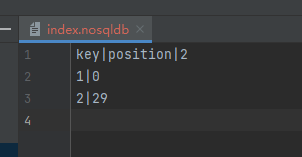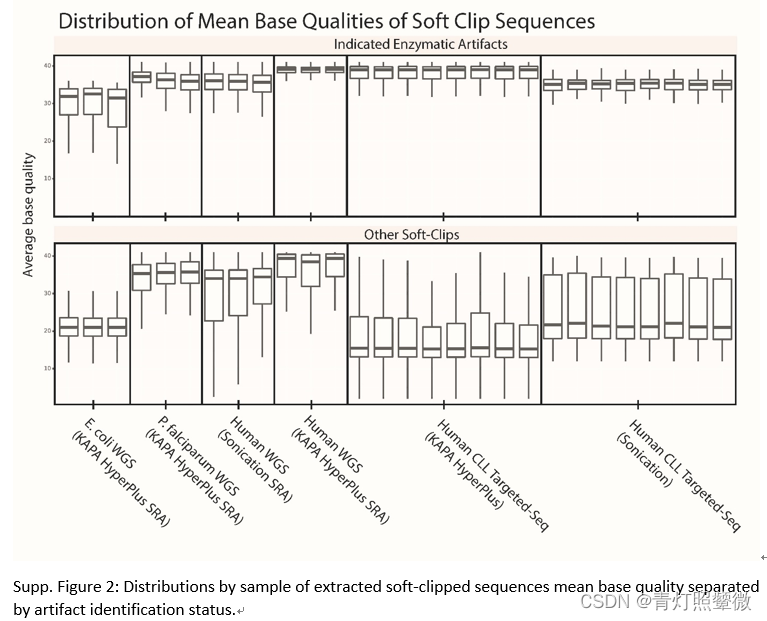并查集
正如它的名字一样,并查集(Union-Find)就是用来对集合进行 合并(Union) 与 查询(Find) 操作的一种数据结构。
合并 就是将两个不相交的集合合并成一个集合。
查询 就是查询两个元素是否属于同一集合。
并查集的原理
并查集是一种树型的数据结构,用于处理一些不相交集合的合并及查询问题(即所谓的并、查)。比如说,我们可以用并查集来判断一个森林中有几棵树、某个节点是否属于某棵树等。
组成
并查集主要由一个整型数组pre[ ]和两个函数find( )、join( )构成。
数组 pre[ ] 记录了每个点的前驱节点是谁,函数 find(x) 用于查找指定节点 x 属于哪个集合,函数 join(x,y) 用于合并两个节点 x 和 y 。
现实意义
比如现在有这样的情况:
目前饭局有10个人,没两个人之间都可能存在远方亲戚关系,如何将个人分成不同的家庭?现在将个人编号为{0,1,2,3,4,5,6,7,8,9}
![[外链图片转存失败,源站可能有防盗链机制,建议将图片保存下来直接上传(img-xp2EqcYB-1672971490156)(C:\Users\17512\AppData\Roaming\Typora\typora-user-images\1672967653754.png)]](https://img-blog.csdnimg.cn/1bde8c0e32e14178baee7efd829e0aa3.png)
-1表示假设每个人之间都不存在亲戚关系
接下来,饭局中的人互相交谈,了解到自己的亲戚关系,因此可以形成不同的家庭。比如:当前是s1:{0,6,7,8},s2:{1,4,9},s3:{2,3,5}形成了不同的家庭。
![[外链图片转存失败,源站可能有防盗链机制,建议将图片保存下来直接上传(img-VZrorsUR-1672971490158)(C:\Users\17512\AppData\Roaming\Typora\typora-user-images\1672967711197.png)]](https://img-blog.csdnimg.cn/f55a85ee9c054c16836f4e170b65aee6.png)
用树模型表示
![[外链图片转存失败,源站可能有防盗链机制,建议将图片保存下来直接上传(img-8NEgt0JH-1672971490159)(C:\Users\17512\AppData\Roaming\Typora\typora-user-images\1672967778007.png)]](https://img-blog.csdnimg.cn/a50ecf41c956403f8556b384f0387ecf.png)
因此规定并查集数组有下面的规定:
- 数组的下标对应集合中元素的编号
- 数组中如果为负数,负号代表根,数字代表该集合中元素个数
- 数组中如果为非负数,代表该元素双亲在数组中的下标
- 如果此时0和1发现也有亲戚关系,那么s1和s2可以合并为一个新的家庭
![[外链图片转存失败,源站可能有防盗链机制,建议将图片保存下来直接上传(img-04KJOESp-1672971490160)(C:\Users\17512\AppData\Roaming\Typora\typora-user-images\1672967818968.png)]](https://img-blog.csdnimg.cn/df59427d12d3475680448c7389c3c14f.png)
并查集需要有下面的接口
- 查找元素属于哪个集合
- 查看两个元素是否属于一个集合
- 合并两个集合
- 集合的个数
并查集的实现
创建一个并查集
并查集底层就是一个数组,数组内每个元素初始为-1。
public class unionfindset {public int[] elem;public int usedSize;public unionfindset(int n ){this.elem = new int[n];Arrays.fill(elem,-1);}public static void main(String[] args) {unionfindset unionfindset = new unionfindset(10);System.out.println(123);}
}
![[外链图片转存失败,源站可能有防盗链机制,建议将图片保存下来直接上传(img-1R8vPpbF-1672971490160)(C:\Users\17512\AppData\Roaming\Typora\typora-user-images\1672968167815.png)]](https://img-blog.csdnimg.cn/37e594af8027461988547b8db359b7d9.png)
功能实现:
/*** 查找数据 x 的根结点* @param x* @return 下标*/public int findRoot(int x){if (x<0){throw new IndexOutOfBoundsException("下标不合法,是负数");}while (elem[x]>=0){x = elem[x]; //1 0}return x;}/*** 查询x1 和 x2 是不是同一个集合* @param x1* @param x2* @return*/public boolean isSameUnionFindSet(int x1,int x2){int index1 = findRoot(x1);int index2 = findRoot(x2);if (index1==index2){return true;}else{return false;}}/*** 这是合并操作* @param x1* @param x2*/public void union(int x1,int x2){int index1 = findRoot(x1);int index2 = findRoot(x2);if (index1==index2){return;}else{elem[index1] = elem[index1]+elem[index2];elem[index2]=index1;}}public int getCount(){int count = 1;for (int x:elem){if (x<0){count++;}}return count;}public void print(){for (int x:elem){System.out.print(x+" ");}}
并查集的应用
省份数量
有 n 个城市,其中一些彼此相连,另一些没有相连。如果城市 a 与城市 b 直接相连,且城市 b 与城市 c 直接相连,那么城市 a 与城市 c 间接相连。省份 是一组直接或间接相连的城市,组内不含其他没有相连的城市。给你一个 n x n 的矩阵 isConnected ,其中 isConnected[i][j] = 1 表示第 i 个城市和第 j 个城市直接相连,而 isConnected[i][j] = 0 表示二者不直接相连。
返回矩阵中 省份 的数量。
来源:力扣(LeetCode)
链接:省份数量
![[外链图片转存失败,源站可能有防盗链机制,建议将图片保存下来直接上传(img-bHwZJlCa-1672971490161)(C:\Users\17512\AppData\Roaming\Typora\typora-user-images\1672971156494.png)]](https://img-blog.csdnimg.cn/02dd9a21c09f4a24ba21fb881213847f.png)
class Solution {public int findCircleNum(int[][] isConnected) {int n = isConnected.length;unionfindset ufs = new unionfindset(n);for(int i = 0;i < isConnected.length;i++) {for(int j = 0;j < isConnected[i].length;j++) {if(isConnected[i][j] == 1) {ufs.union(i,j);}}}return ufs.getCount();}}
class unionfindset {public int[] elem;public int usedSize;public unionfindset(int n ){this.elem = new int[n];Arrays.fill(elem,-1);}/*** 查找数据 x 的根结点* @param x* @return 下标*/public int findRoot(int x){if (x<0){throw new IndexOutOfBoundsException("下标不合法,是负数");}while (elem[x]>=0){x = elem[x]; //1 0}return x;}/*** 查询x1 和 x2 是不是同一个集合* @param x1* @param x2* @return*/public boolean isSameUnionFindSet(int x1,int x2){int index1 = findRoot(x1);int index2 = findRoot(x2);if (index1==index2){return true;}else{return false;}}/*** 这是合并操作* @param x1* @param x2*/public void union(int x1,int x2){int index1 = findRoot(x1);int index2 = findRoot(x2);if (index1==index2){return;}else{elem[index1] = elem[index1]+elem[index2];elem[index2]=index1;}}public int getCount(){int count = 0;for (int x:elem){if (x<0){count++;}}return count;}public void print(){for (int x:elem){System.out.print(x+" ");}}
}
等式方程的可满足性
给定一个由表示变量之间关系的字符串方程组成的数组,每个字符串方程 equations[i] 的长度为 4,并采用两种不同的形式之一:"a==b" 或 "a!=b"。在这里,a 和 b 是小写字母(不一定不同),表示单字母变量名。
只有当可以将整数分配给变量名,以便满足所有给定的方程时才返回 true,否则返回 false。
来源:力扣(LeetCode)
链接:等式方程的可满足性
![[外链图片转存失败,源站可能有防盗链机制,建议将图片保存下来直接上传(img-FGoEk71r-1672971490162)(C:\Users\17512\AppData\Roaming\Typora\typora-user-images\1672971191283.png)]](https://img-blog.csdnimg.cn/931139852246459c8f8f580f4402663c.png)
class Solution {//等式的满足性public boolean equationsPossible(String[] equations) {unionfindset ufs = new unionfindset(26);for(int i = 0; i < equations.length;i++) {if(equations[i].charAt(1) == '=') {ufs.union(equations[i].charAt(0)-'a',equations[i].charAt(3)-'a');}}for(int i = 0; i < equations.length;i++) {if(equations[i].charAt(1) == '!') {int index1 = ufs.findRoot(equations[i].charAt(0)-'a');int index2 = ufs.findRoot(equations[i].charAt(3)-'a');if(index1 == index2) return false;}}return true;}public static void main(String[] args) {String[] str = {"a==b","b!=a"};//equationsPossible(str);}}
class unionfindset {public int[] elem;public int usedSize;public unionfindset(int n ){this.elem = new int[n];Arrays.fill(elem,-1);}/*** 查找数据 x 的根结点* @param x* @return 下标*/public int findRoot(int x){if (x<0){throw new IndexOutOfBoundsException("下标不合法,是负数");}while (elem[x]>=0){x = elem[x]; //1 0}return x;}/*** 查询x1 和 x2 是不是同一个集合* @param x1* @param x2* @return*/public boolean isSameUnionFindSet(int x1,int x2){int index1 = findRoot(x1);int index2 = findRoot(x2);if (index1==index2){return true;}else{return false;}}/*** 这是合并操作* @param x1* @param x2*/public void union(int x1,int x2){int index1 = findRoot(x1);int index2 = findRoot(x2);if (index1==index2){return;}else{elem[index1] = elem[index1]+elem[index2];elem[index2]=index1;}}public int getCount(){int count = 0;for (int x:elem){if (x<0){count++;}}return count;}public void print(){for (int x:elem){System.out.print(x+" ");}}
}






